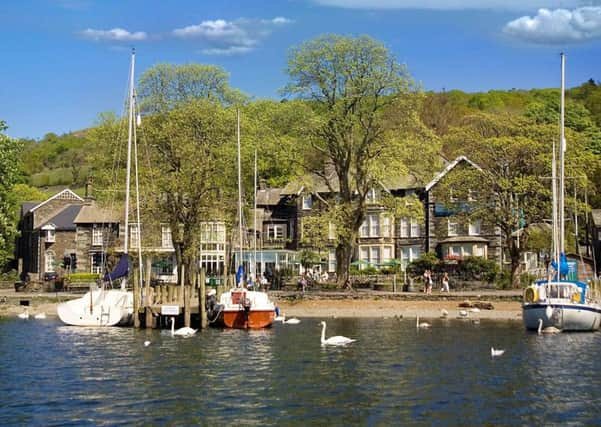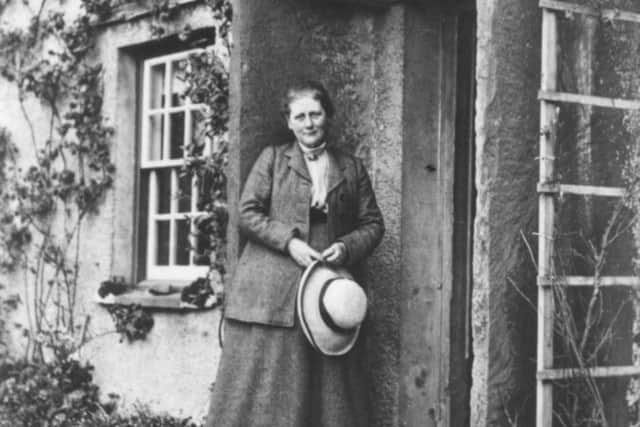Travel: The time warp of Beatrix Potter's Lake District


“Red squirrels crossing” warns a road sign at the Ullswater end of the Kirkstone Pass. I didn’t run any over, but I’ll take it on trust that they are there. Because the Lake District is exactly the kind of place where they would be, a time warp where Squirrel Nutkin (a red, obviously) and his brother, Twinkleberry, still needn’t worry about those pesky greys.
There are a lot of good things about being in a time warp. The triangle of the Lake District between Grasmere, Near Sawrey and Coniston on the other side of the Kirkstone Pass gets most of them right. Not the traffic, obviously, but that’s our own fault. Indeed, if the Lake District was a true time warp there wouldn’t be any roads over its passes in the first place. That’s what National Trust co-founder Canon Hardwicke Rawnsley wanted anyway, but as he also took against cinemas and pubs, it’s fair to say he wasn’t always right.
Advertisement
Hide AdAdvertisement
Hide AdRawnsley lived near Grasmere, at the northern apex of that Lake District triangle. He was a friend and great supporter of Squirrel Nutkin’s creator, Beatrix Potter, who lived at Near Sawrey, 20 miles to the south and who left the Trust 4,000 acres and 14 farms when she died in 1943. John Ruskin, whose home at Brantwood, just five miles to the east, is also a Trust property, was a massive influence on Rawnsley and had even bigger dreams of social reform than the other two (or, come to that, nearly everyone else in the 19th century).


I know this dreamers’ triangulated countryside quite well. I have walked and cycled its twisting B-roads so often that I feel guilty driving on them. It’s hardly the most spectacular part of the Lake District but its crags and hills are enticing promises of the wilder peaks to the west and north. At the same time, its landscape is half-tamed and occasionally pastoral, its farms have a vernacular charm and its villages’ buildings huddle together like convivial drunks. Advertising is at prelapsarian levels (ie, there’s hardly any), signage is discreet and rigorous planning keeps the excesses of modernity at bay. Add democracy, and it’s like 1913 with gastropubs. Eat at places like The Wild Boar, near Crook, and you’ll very quickly realise that this is No Bad Thing At All.
Staying at the Waterhead Hotel, near Ambleside, all we had to do was look out across Lake Windermere just 20 yards away, and memories flooded back across the years to the day we took our now grown-up children for a trip on the lake. It was their first, and they loved it. It was good to see so little had changed.
Hill Top, Beatrix Potter’s former home, and one of the focal points of celebrations of the 150th anniversary of her birth in July, is equally unchanged. Visiting it for the first time without children meant we could concentrate on the fascinating woman behind the children’s stories, rather than the stories themselves.
From the window of John Ruskin’s home at Brantwood, I looked down at the Steam Yacht Gondola slowly puffing across Lake Coniston. I won’t say how long ago it was, but when I started working as a journalist in the area, it was still being restored to its original 1859 glory. I’d never seen it sailing, but it looked perfect – even before I found out that it was also the inspiration for Captain Flint’s houseboat in Arthur Ransome’s Swallows and Amazons, that great exaltation of free-range childhood.


Dismiss Beatrix Potter’s “small tales” as sentimental whimsy if you want, but as the new exhibition at the Beatrix Potter Gallery in Hawkshead makes clear, they are also an astonishingly close reading of nature. The commentary is pushing it a bit when it describes her work as “Tarantino for tots”, but certainly nature often takes its bloody course in her tales – Squirrel Nutkin, remember, emerged minus half of his tail after being attacked by Old Brown the owl. And one of the reasons the clothes she made for her animals fit so well in our imagination is that they would have fit the animals, too. Why? Because she cut them up when they died to understand their anatomy.
Some two million of Potter’s books still sell every year, but July will see the publication of a new one, Kitty in Boots, written in 1913 but newly illustrated by Quentin Blake. In August, a new film of Swallows and Amazons will hits cinemas. The magical link between the Lake District and childhood goes on.
Advertisement
Hide AdAdvertisement
Hide Ad• Prices for the Waterhead Hotel near Ambleside and The Wild Boar near Windermere (both four-star) begin at £269 for a midweek two-night stay. Details on www.englishlakes.co.uk, reservations on 0330 4042 681/691. The Beatrix Potter Gallery, Brantwood and Hill Top House are all run by the National Trust, admission from £6 to £11 per adult.